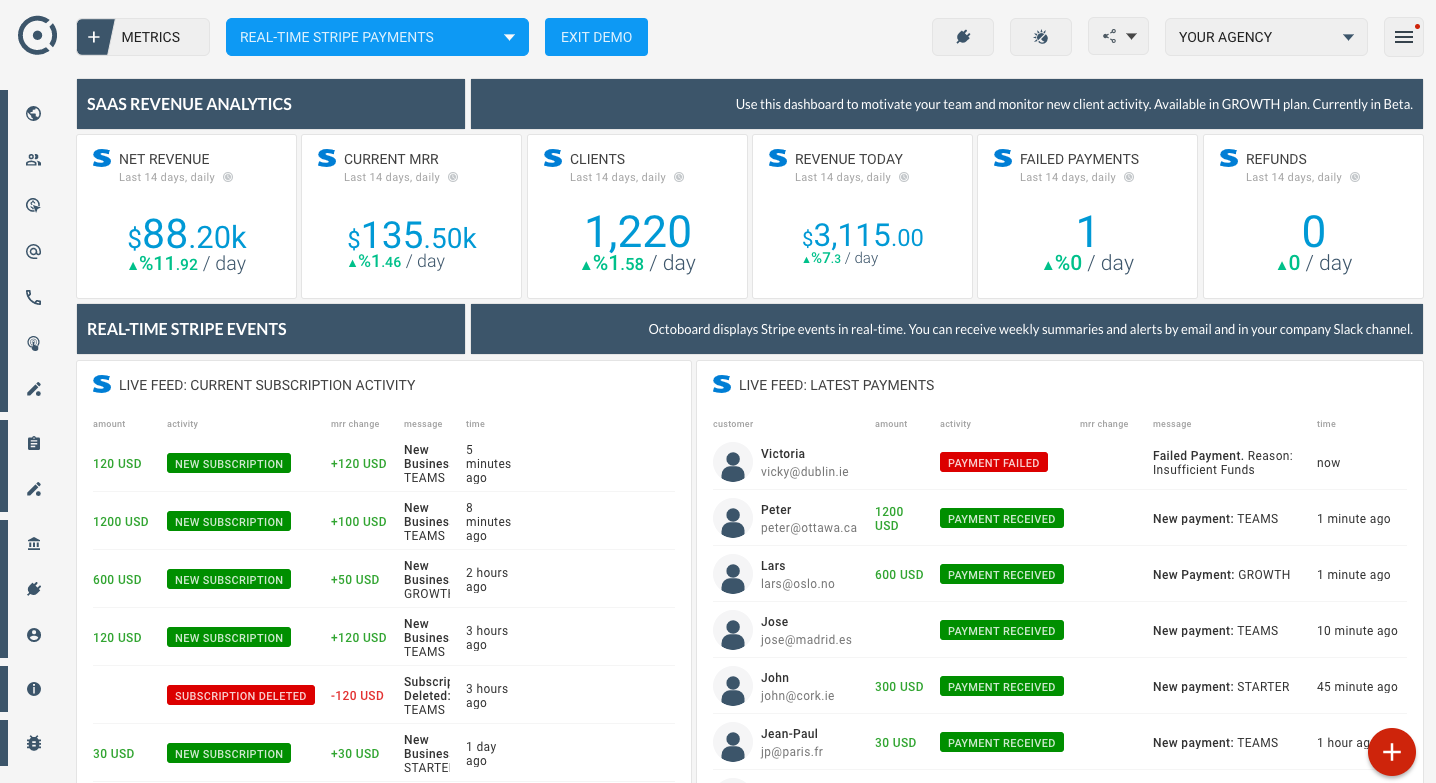Stripe: Complete Buyer's Guide
The comprehensive AI-powered payment platform that transforms ecommerce revenue through intelligent optimization, fraud prevention, and transaction recovery.
Stripe has established itself as the definitive payment platform for ambitious ecommerce businesses seeking to maximize revenue through artificial intelligence. Built on a foundation of over 10 billion transaction analyses and direct integration with 90% of global card networks[7], Stripe's comprehensive AI suite delivers measurable business impact through three core capabilities: intelligent payment routing, advanced fraud prevention, and automated transaction recovery.
Market Position & Maturity
Market Standing
Stripe occupies a dominant position in the AI-powered payment optimization market, distinguished by its comprehensive platform approach and proven enterprise scalability.
Company Maturity
The platform demonstrates exceptional market maturity through its extensive customer base spanning high-growth startups to Fortune 500 enterprises.
Growth Trajectory
Enterprise adoption patterns indicate strong market validation, with large-scale deployments requiring 5-month implementation timelines for complex integrations like Adobe's 22-market subscription optimization project[25][29][31].
Industry Recognition
Stripe's continuous innovation trajectory is evidenced by ongoing AI capability enhancements and expanding feature sets that maintain competitive advantages.
Strategic Partnerships
Stripe's global infrastructure supporting over 100 payment methods[55][57] with region-specific optimization positions the company as the preferred platform for international ecommerce expansion.
Longevity Assessment
Financial stability indicators include the company's ability to support enterprise customers through complex implementations and ongoing optimization programs.
Proof of Capabilities
Customer Evidence
Ticket Tailor achieved transformative results with founder George Follett reporting they "doubled the number of sign-ups and ticket sales" within 12 months, delivering a 10.5% revenue increase compared to their previous payment system[57].
Quantified Outcomes
Quantified performance metrics across customer implementations show 11.9% average revenue increases through Stripe's Optimized Checkout Suite[58], with 57% recovery rates for failed recurring payments[58][56] and 38% fraud reduction through Radar[58].
Case Study Analysis
Enterprise validation comes through Adobe's comprehensive implementation, where the company achieved 26% cost reduction, 18% fraud decrease, and $2.7M annual savings through AI-powered routing optimization across 22 markets[25][29][31].
Market Validation
Market validation is demonstrated through Stripe's ability to serve both high-growth startups and Fortune 500 enterprises, with 85% plug-and-play compatibility for major ecommerce platforms like Shopify and BigCommerce[41][51].
Reference Customers
GitHub Sponsors program achieved 52% contribution increases after implementing Stripe's AI-powered payment optimization[7].
AI Technology
Stripe's technological foundation centers on its proprietary Payments Foundation Model, trained on data from direct integration with 90% of global card networks and analysis of over 10 billion transactions[7].
Architecture
The platform's architecture supports over 100 payment methods with region-specific optimization[55][57], dynamically surfacing relevant payment options based on customer location, device type, and transaction history.
Primary Competitors
While Adyen focuses primarily on routing optimization and Recurly specializes in subscription recovery, Stripe offers integrated AI across fraud detection, payment optimization, and transaction recovery.
Competitive Advantages
Stripe's comprehensive AI capabilities and global infrastructure provide significant advantages over specialized competitors.
Market Positioning
Stripe's comprehensive approach delivers superior value for businesses seeking end-to-end payment optimization rather than point solutions.
Key Features

Pros & Cons
Use Cases
Integrations
Featured In Articles
Comprehensive analysis of Payment Optimization for Ecommerce for Ecommerce businesses and online retailers. Expert evaluation of features, pricing, and implementation.
How We Researched This Guide
About This Guide: This comprehensive analysis is based on extensive competitive intelligence and real-world implementation data from leading AI vendors. StayModern updates this guide quarterly to reflect market developments and vendor performance changes.
58+ verified sources per analysis including official documentation, customer reviews, analyst reports, and industry publications.
- • Vendor documentation & whitepapers
- • Customer testimonials & case studies
- • Third-party analyst assessments
- • Industry benchmarking reports
Standardized assessment framework across 8 key dimensions for objective comparison.
- • Technology capabilities & architecture
- • Market position & customer evidence
- • Implementation experience & support
- • Pricing value & competitive position
Research is refreshed every 90 days to capture market changes and new vendor capabilities.
- • New product releases & features
- • Market positioning changes
- • Customer feedback integration
- • Competitive landscape shifts
Every claim is source-linked with direct citations to original materials for verification.
- • Clickable citation links
- • Original source attribution
- • Date stamps for currency
- • Quality score validation
Analysis follows systematic research protocols with consistent evaluation frameworks.
- • Standardized assessment criteria
- • Multi-source verification process
- • Consistent evaluation methodology
- • Quality assurance protocols
Buyer-focused analysis with transparent methodology and factual accuracy commitment.
- • Objective comparative analysis
- • Transparent research methodology
- • Factual accuracy commitment
- • Continuous quality improvement
Quality Commitment: If you find any inaccuracies in our analysis on this page, please contact us at research@staymodern.ai. We're committed to maintaining the highest standards of research integrity and will investigate and correct any issues promptly.